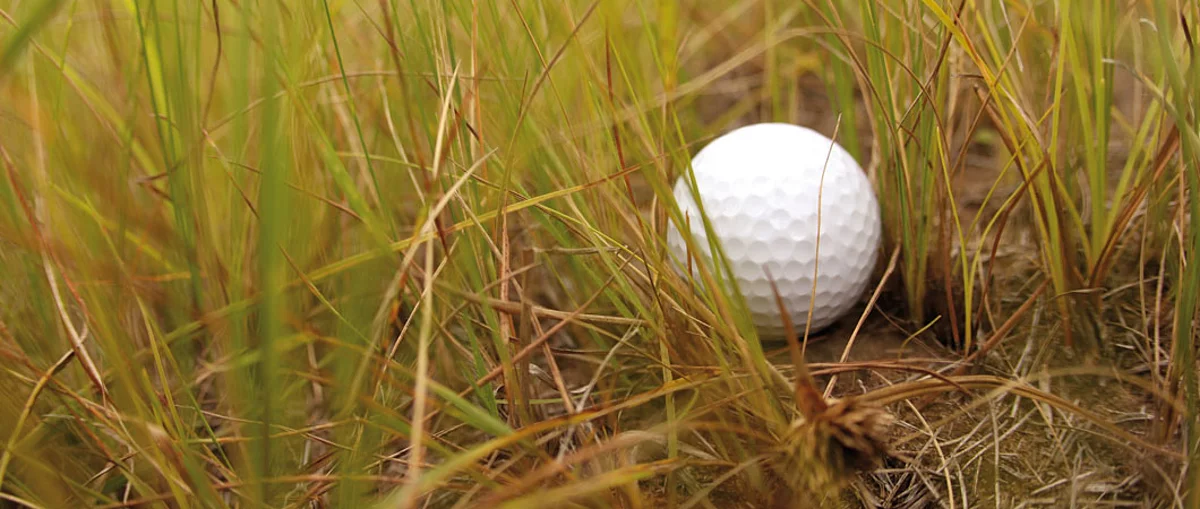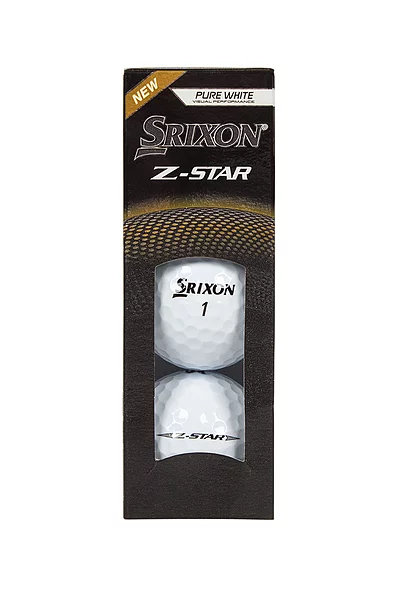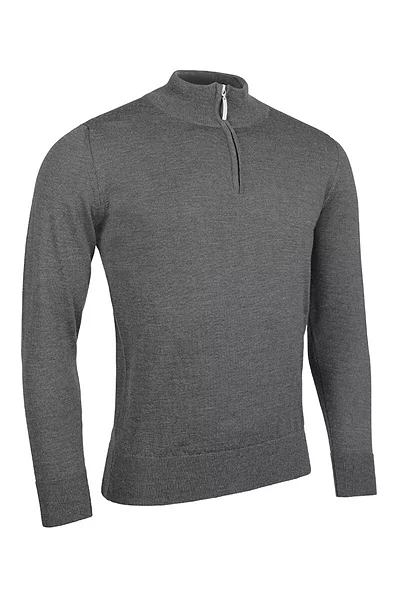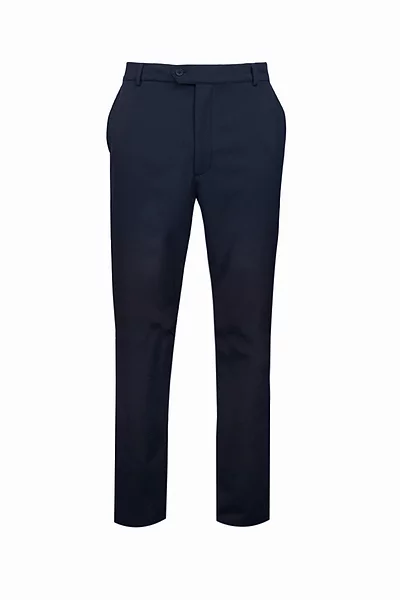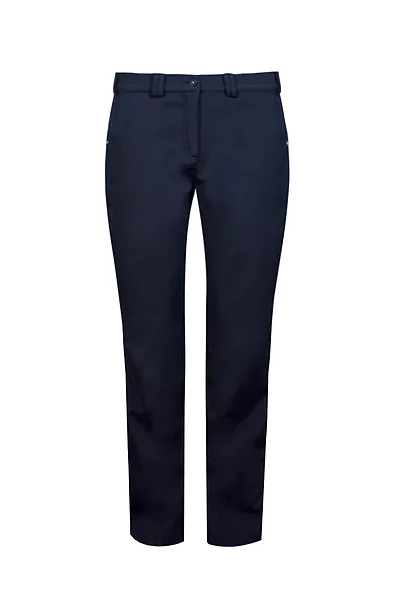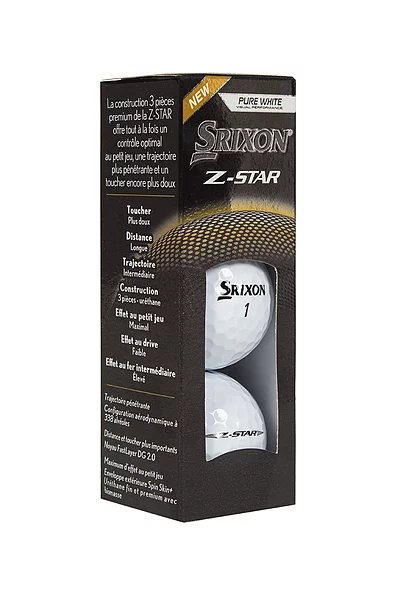Table of Contents
- Why is using the right golf ball important?
- What golf ball should I use: a buyer's guide
- Types of golf ball
- The best types of golf ball for the stages of your golfing journey
- How to test out a new type of golf ball
- Let Glenmuir take care of all your golfing needs
- FAQs
- Final thoughts
Many people refer to golf as the 'stick and ball game,' and the emphasis - or overemphasis - on the clubs has unfairly dominated golf discussions since the game was first invented.
Because most golf balls are all the same, right? This myth has carried through the years to the point that even a seasoned golfer can assume that there is no major difference between golf balls.
However, golf balls are much more important than you might think. The golf ball is a vital component of the game, and choosing wisely is of importance if you want to help the quality of your game along.
Choosing the right golf ball can be confusing, to say the least. There are such a variety of models and styles that it can feel overwhelming knowing where to begin.
In this article, we have cut through the jargon to give you a comprehensive overview of the different types of golf balls out there, as well as how to test a brand new ball and so much more.
Why is using the right golf ball important?
You might be surprised to learn that choosing the right golf ball can really help improve your overall performance on the golf course. This statement becomes even more accurate as a player gets better.
For example, professional golfers need to find a golf ball that's perfect for them because, when there's even a slight improvement in their game, it could be the difference that gets them in the win column.
But, for those of us that most certainly won't be participating in the Ryder Cup anytime soon, finding the right golf ball is something that you should take time to do.
After all, if having the right ball means greater gains on the golf course, why wouldn't you spend time finding the very best one for you?
Perhaps you require some extra spin control so that you can create more birdie chances, or maybe it's distance that you need so that you can make a long par four in two. Whatever it is, having the right golf ball can really help.
We all know that fine margins are the name of the game, and all of us could use the opportunity to close in those margins when it comes to the golf course.
But, it can be confusing trying to get your head around the differences in these balls and what to look for. This guide will discuss all that and more as we help you find the perfect golf ball to have you upping your game, hopefully in no time.
What golf ball should I use: a buyer's guide
We have compiled a buyer's guide, so you will know exactly what to look for when it comes to a new golf ball.
The factors we look at are:
- Soft vs hard golf balls
- Swing speed
- Compression
- Golf ball construction
- Golfer's ability
Soft vs hard golf balls
Inevitably, there will be a trade-off in certain aspects of your golfing games regardless of whether you use a soft ball or a hard ball. For example, those players with an average swing speed may find that they won't be able to get as much distance from a soft golf ball.
But, they certainly do have attributes that more than warrant their appeal. For one, they will give you much more control on the course as they offer more spin than a hard golf ball would.
A soft golf ball is a good choice when your distance is good, so you don't need to factor any extra mileage in. The soft golf ball will allow you more control and additional spin, which will make chips and wedge shots much easier.
A soft golf ball is best for being able to shape shots. If you like to work the ball in different directions, then this is most definitely a ball you should consider.
A hard ball, on the other hand, will focus on allowing you to go further, as they are specially tailored for distance. They'll come off the face of the club hot, whether it's iron shots or driver tee-offs, and many can get a lot of roll when they hit the fairway.
However, as we have seen, they are sacrifices that will need to be made in order to achieve this.
With a hard golf ball, a golfer won't have as many spins and overall control when manoeuvring the green. While it might land on the green, it doesn't mean it will stay there. However, a hard ball can allow you to hone your accuracy skills; this is due to them having a more accurate flight path because they don't spin as much.
If draws and fades are your idea of a good time on the course, a hard golf ball will be unable to shape your shots as well as a soft golf ball.
Swing speed
Swing speeds mean a lot when it comes to your golfing game. It heavily influences what type of golf ball you should use and relates to a ball's compression. If that sounds a bit too confusing, don't worry, we'll talk much more about this further in the article.
But, for now, keep in mind that those golfers that have slower swing speeds should use a soft golf ball, and those with faster swing speeds should use hard golf balls. Again, this relates to compression, but we'll come to that.
If you have a slow swing speed, your ball will not reach as much height.
Compression
A golf ball's compression refers to how much the ball compresses into the clubface when you hit it. This compression transfers energy from your golf club of choice into the ball; the more compression, the more energy that is transferred, and a greater distance will result.
A golf ball with a high compression rating will have a more difficult time in transferring energy. By the same vein, being able to transfer more energy into a low compression golf ball is much easier.
When you think about it, it then becomes clear that both compression and the speed of your golf swing are intrinsically linked. The greater your swing speed, the more simple it will be to compress the ball. Those with fast swings work best with high-compression balls, while slower swing speeds work best with low-compression golf balls.
Although we will talk about it in more detail further into the article when we deal with the golf ball's construction, it's worth a mention here; compression comes down to the golf ball's core.
Those balls with a soft core will have a low compression rating, although the ball may not feel soft to the touch. Some, in fact, may feel quite firm, but most will be softer to the touch, hence the name.
High compression golf balls will have a firmer feel - usually. Again, it's not always the case, but it's usually the case and largely depends on the overall construction of a golf ball.
Compression ratings can vary anywhere between 40 to 110. Those golf balls below 80 are considered low compression; 90 is considered to be mid-compression, and anything over 100 is a high compression golf ball.
Those golfers with slower swing speeds should strongly consider choosing a ball of 80 or lower. Those with faster swing speeds should look for a golf ball of 100 or higher when it comes to compression speed. The best golf ball for those players with a medium swing speed should have a compression rating of 90.
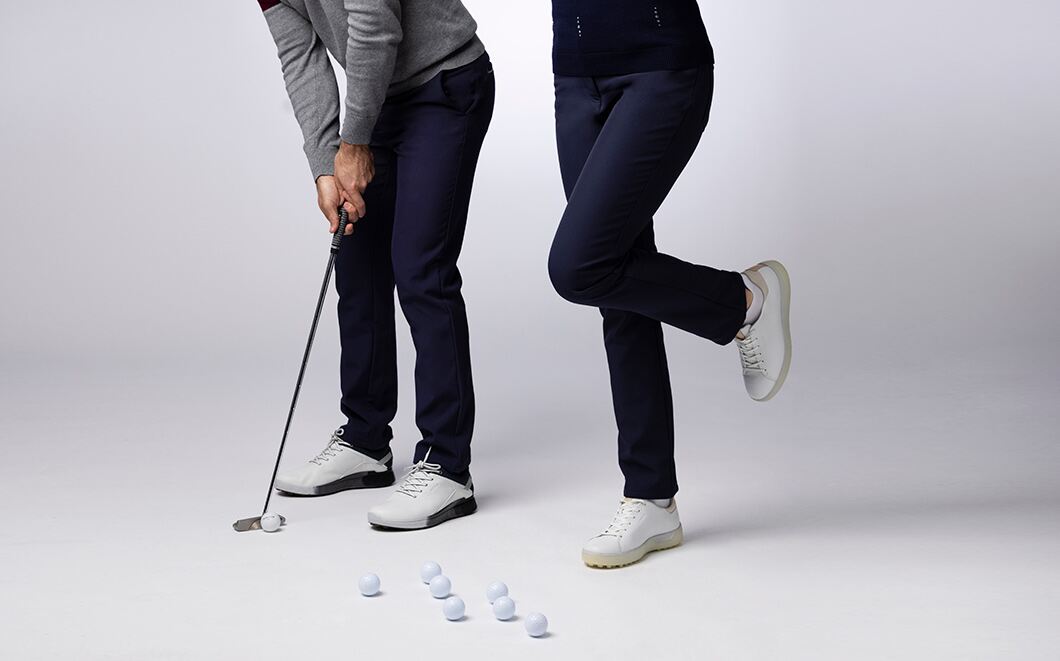
Golf ball construction
Core
Think of the core of a golf ball as the engine of the golf ball. This is the centre that everything else revolves around and is arguably its most important part.
If a golf ball didn't have a core, the ball would not stay up in the air for any amount of time; a golfer would make contact with the golf ball only to watch it travel little more than a few yards before quickly making land again.
When you are thinking about what golf ball will be best for you, it's important to know your swing speed which will make it easier to match you to the correct core - or compression.
The core is all about transferring energy, which is why the compression directly relates to the core. Softer cores make it easier for golfers to transfer energy, while harder cores make it harder.
When asking yourself what golf ball you should use, know your swing speed, and match it to the core – or compression.
Mantle
The mantle of a golf ball rests between the core of the ball and the cover. The mantle will help improve distance and spin.
It works by protecting the core of the golf ball that it wraps around. It seals the core and stops water from getting into it and causing damage.
Certain golf balls will have more than one mantle layer, thus changing the way it performs. For example, when the thickness of a mantle is increased, it directly influences the spin characteristics.
Cover
As we shall see when discussing the different types of golf balls available, the actual golf ball construction affects both its spin and aerodynamics. The cover is responsible for the ball's flight trajectory and giving the player overall control of the ball.
The pattern of dimples on a golf ball will affect how aerodynamic it is, as we investigated in our recent article. The dimple effect is presented on golf balls so that the ball can stay airborne for longer as they disrupt airflow. If you have trouble with distance, look at a golf ball's aerodynamics in a bid to see if your shots will stay in the air for longer.
Another key factor is the firmness of the cover; with a softer cover, the grooves in your iron will more easily grip the golf ball. It will also allow the ball to stay on the clubface that bit longer and generate additional spin.
Golfer's ability
Under 5 handicap
If you have a handicap under 5, you don't need us to tell you that you are a very accomplished amateur golfer. With a handicap so good, golfers like these will likely benefit from tour-level golf balls because they will increase the distance from off the tee and offer the spin required to appropriately navigate the greens.
Even if the advantage of these types of balls is small, minimal even, it can make all the difference when it comes to winning or losing a game.
5 to 15 handicap
While a handicap anywhere between 5 - 15 is a great achievement, players sitting in this range usually require a bit of extra distance.
Usually, but not always, that is. But they'll still want a good spin in a golf ball, too.
If you are in this category, you will most likely want a ball that will allow you a higher trajectory because a higher launch will help your game.
Over 15 handicap
If you are in this category, you'll require a golf ball that affords you a straighter flight through the air and increased distance. You'll also benefit from a harder ball.
Players with this level of handicap may struggle to get the required spin around the greens on a course, so look for a ball that will give a good level of spin as well as give you the distance you need.
Types of golf ball
One-piece balls
One-piece balls aren't used as commonly as they once were. Now largely reserved for crazy golf courses and the odd driving range, these balls are created using one material only, usually Surlyn, which is known for its toughness and impressive durability.
They have a tinny, heavy feel and won't give you much of a spin; therefore, they aren't advised when you are playing a game of golf.
Two-piece balls
Two-piece golf balls are more commonly used than one-piece balls. They're called 'two-piece' balls because they are created from 2 separate materials, usually rubber in the middle and a casing of Syrlyn or urethane.
While more advanced golfers will usually prefer a ball with more layers to it than a two-piece, for those new to the world of golf, two-piece golf balls come highly recommended.
These balls are designed with durability and distance in mind and have a slightly softer feel, making them perfect for being played on the course.
However, when you compare them to the various other types of golf balls on the market, all-in-all, they are still relatively hard. If you want to push your short game to the max, this may not be the ideal ball for you
Three-piece balls
If you are looking for a ball that's a good compromise between feel and distance, consider a three-piece ball. Three-piece golf balls are used by more serious golfers and even professionals, routinely being used on the PGA and European tours.
While it once was the case that three-piece balls would come up short when it came to distance, advances in technology mean that, today, this is no longer a problem. However, three-piece golf balls can become scuffed over time, but for a low handicap golfer who can use the lighter touch and higher spin rates of these balls, they are the best golf ball.
Four-piece balls
There's a lot of talk among golfers - including the pros - as to whether a four-piece ball, with its extra layer, really makes that much of a difference.
The theory behind these balls is that there should be the presence of what is referred to as 'spin separation', where the extra layer only comes into play when the golfer reaches fast enough swing speeds.
It's a complex science and one that not many regular golfers are going to notice. The main thing these four-piece balls are meant to do is when hitting the ball with a driver, the ball should spin less. When hitting with a short iron, the ball's spin will increase, which is said to give experienced golfers the best of both worlds.
Five-piece balls
Finally, the most complicated golf ball of all, the five-piece. If you weren't impressed with the thought of four-piece golf balls, you certainly won't enjoy the prospect of this one.
The science is much the same as four-piece golf balls; these extra layers allow for more spin separation and less compression for overall better performance.
Whether the difference between this and the price is substantial enough to warrant investing in, however, is up for the individual golfer to decide. These are usually premium golf balls, so take this added expense into consideration before making a purchase.
The best types of golf ball for the stages of your golfing journey
Beginner golfers
Don't worry, we've all been there
When you start commanding a bit more authority in your game, it's time to think about setting aside consistency and aiming for consistent progression. Only then is it time to look specifically at what type of golf ball you might need; look for a golf ball that will allow you to improve in the areas you usually struggle with.
For example, if gaining accuracy straight off the tee is a concern for you, the best golf ball would be something that is designed to have a lower spin on long shots. If control is the issue, consider a soft golf ball which will have a higher spin rate.
The average golfer
As your game starts to improve and you begin to become a more serious golfer, you're probably beginning to move down the handicap level - albeit slower than you might like.
You should start looking at choosing one specific golf ball with which to hone your skills. Some golfers assume that playing with a variety of golf balls on each round or every few holes can benefit them. Unfortunately, this is definitely not the case.
In fact, playing with a variety of different ball types will only lead to your game being negatively impacted.
The distance you experience from one ball can potentially be anywhere from 5 to 10 yards less with a ball with other characteristics, so it's not worth running the risk. This shows just how important the right golf ball can be. Stick with the ball you decide on to see if your game can't improve.
And remember, while it may not happen overnight, it's certainly worth putting the practice in in the long run.
In the next section, we'll give you some handy hints and tips on how to practice with a new golf ball.
How to test out a new type of golf ball
Practice your short game
-
When you are starting out with deciding which is the best golf ball for your game, bring one sleeve of each type of golf ball you are testing.
-
Create a variety of 'stations' that will evaluate each ball, concentrating on the shots you will need to hit most often when it comes to playing a real game. Think about short and long pitches and chips, in particular.
-
With each ball you are testing, hit them from the same area so that the conditions remain the same for each shot, as best they can. While it would be great to be able to control the weather, if it's breezy, it may be more difficult to compare accurately.
-
When hitting the ball, it isn't just the feel of the ball that you should be factoring in. Believe it or not, the sound of impact between your golf clubs and the golf balls is an important element, too. Make sure you can hear contact.
-
Hopefully, by now, you will have a better idea of which balls suit you. Choose a few of your possible options and get yourself on the course for some play.
Deciding the best golf ball on the course
-
Practising on the course will allow you to more accurately evaluate the spin and aerodynamics of each golf ball. This time, bring at least 2 sleeves of each ball - you're going to need them!
-
Aim for side-by-side testing. This is important so you can get real-time feedback about the performance of each golf ball and their differences.
-
Observe the golf ball flight. While 2 balls can have almost exactly the same launch and spin through the air, they can have completely different aerodynamic outcomes. For this reason, it's a good idea to use your usual golf course, so you will have a more accurate idea of distances.
-
While it might not always be possible, try and take multiple shots from the precise same spot. In order to do this, you may need to find a quiet time to hit the golf course.
-
Look, in particular, at both your short-game shot and approach shots.
Consider what you need
In the end, it all comes down to what you want in a golf ball.
Think about:
-
Your swing speed
-
Your ability
-
Your areas for improvement
-
Your budget
Ultimately, the choice is yours. Once you have decided on the best golf ball for you, it's advised that you stick with it. Remember, you will have both good days and bad days, and while it might be easy to blame your new golf ball, the fact of the matter is that it will take some getting used to.
Once you begin seeing improvement and progression, however, you'll know that all that decision-making, research, and practice have all been worth it.
Let Glenmuir take care of all your golfing needs
We at Glenmuir know about the importance of golfing in style. Since 1891, Glenmuir has been the number 1 brand for superior golf clothing collections, and today we continue to craft classics and contemporary golf apparel, so you can look and feel your best on the golf course.
We have a wide range of men's and women's golf clothing, including jumpers, trousers, windproofs, waterproofs, and even accessories and equipment including Glenmuir logo Srixon Z Star 3 Pack Golf Balls. Check out our range for yourself, and you won't be disappointed.FAQs
Does water hurt a golf ball?
What are the best golf balls to use in the winter months?
As the temperature has a direct impact on the performance of a golf ball, in the colder months, you may want to consider a lower-compression ball. Balls with a higher compression will feel heavier and more difficult to get distance from due to their density.
If you wish, you can choose coloured golf balls for improved visibility, which are useful when the weather isn't great. This can save a lot of money as you hopefully won't be losing as many balls!
How should I store a golf ball set?
Are expensive golf ball sets better?
Arguably, the players that will benefit the most from expensive golf balls are those with a low handicap. In other words, if you have a superb golf game and you're keen to maintain it, consider investing in some premium balls.
More expensive balls usually have an increased spin on the green and a softer feel when hit. The average golfer largely will not have to worry about more expensive golf balls and ideally should use their money to improve their swing.
The choice, however, is yours.
Can I use different types of golf balls?
Can I buy recycled golf balls?
Should I buy lake balls?
What's the best way to clean golf balls?
Can I machine wash golf balls?
Final thoughts
There's a lot more to choosing a golf ball than you might at first think. Golf balls come in a range of designs with lots of key features and functionalities. Hopefully, reading this article will have brought you some insight into what golf ball you should use and why.
But, the fact of the matter is, you won't always know what golf ball is perfect for your game until you start using a variety, so the decision-making really begins when you start hitting some practice shots.
Treat yourself to a few different varieties and start practising. Experimenting with different types will show you the varied features, so you can practice shots. By doing this, you will begin to build a comprehensive understanding of the best golf ball for your style of play.
You don't need to be spending hours and hours doing practice shots to learn more about the benefits and disadvantages of certain balls.
Take into consideration your budget, which should always be your first decision. However, in our opinion, mid-priced golf balls are best as you can really begin to feel the difference, as well as the potential to improve your golfing game by quite a mark.
With a cheaper ball, you won't always notice much of a difference, and for many, a premium golf ball isn't required unless your handicap is spectacular.
